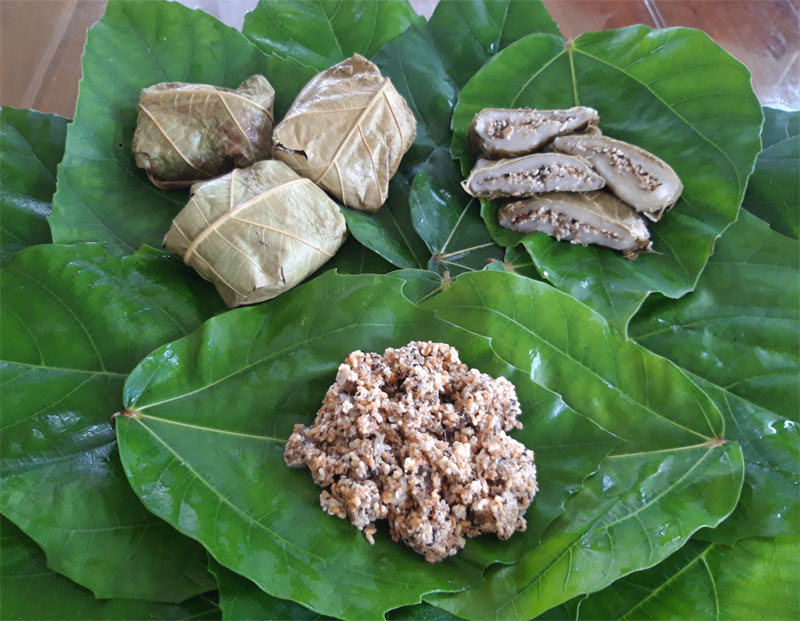


Along with Treo Kheo and Nang cakes, the cakes from ants' eggs are a special kind of cakes, which is really meaningful for Muong ethnic people in the province. Many Muong ethnic young men keep the custom of making the cakes from ants' eggs to give their father and mother-in-law.
Mr. Bui Van Trong from Bun hamlet, Yen Mong commune (Hoa Binh city) says when he grew up, he was handed down the customs that Muong ethnic young men often went to the forest to get ants' eggs to make cakes at the end of lunar February and early lunar March. The first cakes of the season of cakes from ants’ eggs would be used as gifts for parents-in-law, showing the respect and the gratitude.
The biggest difference of the cakes from ants’ eggs and other cakes is that the cake filling is made from ants' eggs. However, not all ant eggs can be eaten. Only eggs of black forest ants with small body and pointed tails with their nests on bamboo, neohouzeaua, aganonerion polymorphum and bambusa nutans are aromatic, delicious and greasy and can be eaten. Only those who are good at going to the forest, or often go to get ant eggs know how to distinguish and find the position of ants to collect eggs.

A unique cake made from black ant eggs.
Ms. Bui Thi Om, Khang Dinh hamlet, Yen Mong commune (Hoa Binh city) says in order to make delicious cakes, the most important thing is to make delicious cake filling. "Many people making the cakes from ants’ eggs often fry the ants' eggs with fat and onions, then they mix minced meat and crushed peanuts, but we only fry onion with fat, and then mix them with raw ant eggs to make the cake filling. The shell is made of sticky rice with large seeds. The clean rice is soaked in cold water overnight, it is drained and then it is ground into powder and molded with water. After kneading to make the powder dough and smooth, it is divided into small grips, then the cake filling from ants’ egg is put in the middle. The cake is wrapped with fig leaves. The inner leaf layer can be eaten with the cake. The cake is steamed for about 30 minutes to be well-done.”
When the cakes from ants' eggs are well – done, they are often cut into small pieces under the fresh fig leaves. The cake can be eaten hot or cold with a delicious taste, but people who enjoy it will feel the deliciousness of glutinous rice, the coolness of fig leaves and especially the delicious and charming taste of ant eggs inside. Today, although there are many kinds of cakes, the cakes from ants' eggs are especially loved by Muong ethnic people because of their unique taste and identity.